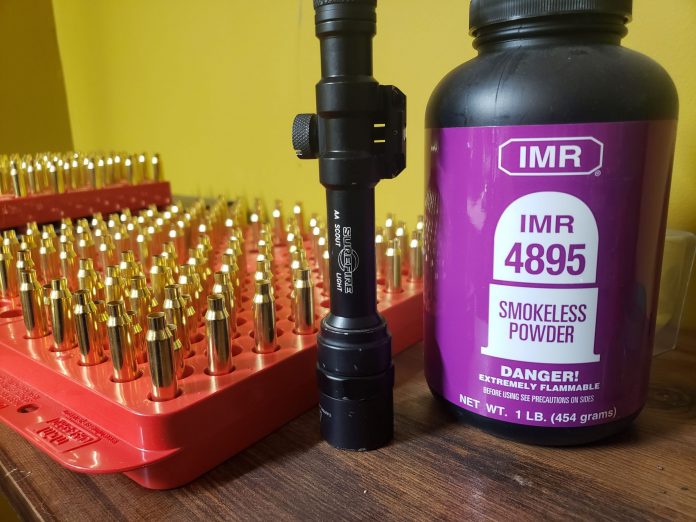
What is a Squib Round?
A squib/squib round/squib load is a malfunction in which a projectile has enough force to leave the casing that it was seated into but does not have enough force to entirely leave the barrel. Therefore the load is a squib, the casing is ejected, and the actual projectile is probably still in your barrel. Scary. A clear sign of a squib is a “pop” but no bang and hardly any recoil. A bullet missing from your case after ejecting it is also a clear sign of a squib. Hint Hint.
Now, let’s set the scene. During a one day precision rifle match in Iowa a shooter who is known to handload was shooting a stage with his bolt gun. After firing two shots and no issue, the next shot fired but with no boom. The shooter moves the bolt back, ejects the round, and chambers the next. Same thing, presses the trigger, no boom. Same thing again, ejects the round and chambers another, same issue.
Quick! What did this shooter do wrong?
Well first of all, he is lucky that his face didn’t get blown off.
The Problem
Short answer: The shooter forgot to put powder into his casings and is lucky that the primer did not detach the bullet from the case causing a squib. Which the shooter also failed to check for after ejecting his round that didn’t fire.
Long answer: During handloading people can often get complacent. Let’s face it, we are doing the same thing about 200x. Seating a primer, dropping powder, seating a bullet, marking the case. Over, and over, and over. This can cause complacency and complacenency can kill. Seriously.
What a lot of people don’t know is how important it is to check every case for powder. This is due to the simple fact that primers have enough power to fire a round without any extra powder. This means that if indeed you forget to load powder into a case and seat a bullet, that primer can cause a squib round due to having enough power to cause the bullet to leave the casing but not fully leave the barrel.
Therefore, if this a click and no boom happens to you as a shooter, you NEED TO CHECK THE ROUND THAT WAS EJECTED FOR A BULLET. If there is no bullet, it is probably still inside your barrel. If you shoot another round and that bullet impacts the lodged bullet in your barrel you will have a very bad day. I’m talking guns blowing up and faces getting injured. Including the eyes, looking at you precision shooters that don’t wear eyepro.

Fixing the Problem
So how do we as handloaders ensure that this never happens?
After every 50 cases are filled with powder, or 100 dependent on the size of your reloading block, take a flashlight and go row by row one by one and ensure that each is filled with powder. Take this extra 10 second step and it will save you in the future.
Also, again, if you have a click no boom, always check the round that was ejected. This goes for bolt guns, gas guns, even pistols. Squibs are no joke so when a malfunction happens, just slow down and see what is going on.



